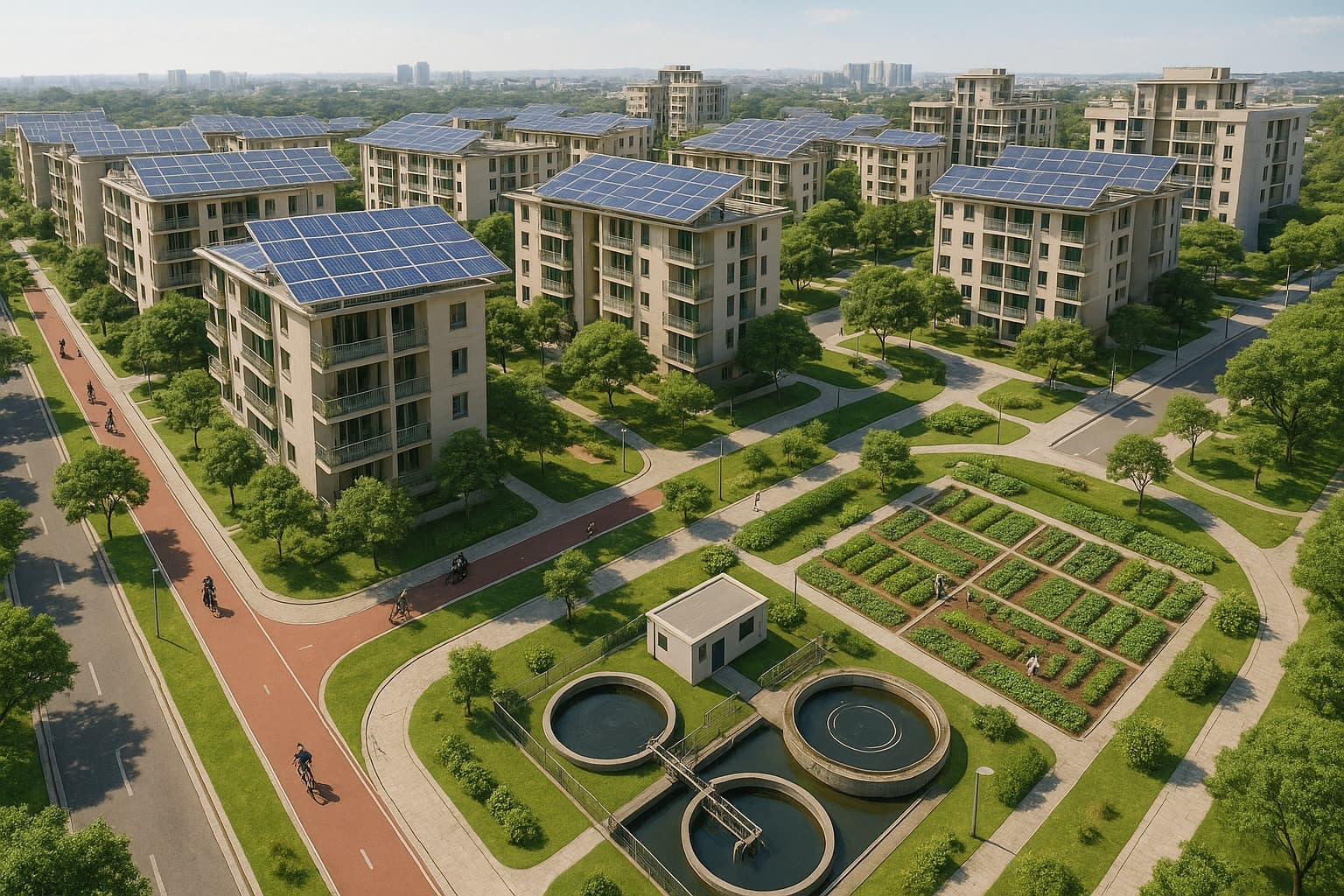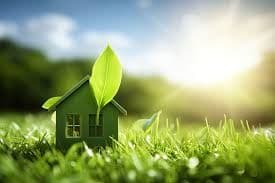Green Housing Trends in 2025: India’s New Way of Living
Summary
Green housing is booming in India, driven by eco-conscious buyers and sustainable tech. Solar panels, rainwater harvesting, and energy efficiency are now key for homes in 2025, offering long-term savings and healthier living.

Close your eyes for a moment and picture this: you wake up to a soft ray of sunlight streaming through a wide glass window. Instead of the constant hum of an air-conditioner, there’s a gentle breeze flowing in through cross-ventilation. You sip your morning tea brewed with harvested rainwater while the solar panels on your roof quietly generate the energy you’ll use for the day. Sounds idyllic, right? Well, this isn’t a futuristic fantasy—it’s what green housing in India is steadily becoming in 2025.
For decades, “a good home” in India meant one that was spacious, well-located, and affordable. But over the last few years, another dimension has quietly slipped into the conversation: sustainability. Today, buyers aren’t just asking “How big is the flat?” or “How close is it to the metro?” They’re also asking, “Is this home eco-friendly?” and “Will it help me save on energy and water bills?”
Why Green Housing is No Longer Just a Buzzword
The climate crisis has moved from newspaper headlines to daily life. From record-breaking summers to water shortages in metros, urban India is experiencing the impact of environmental stress first-hand. Naturally, this is influencing homebuyers.
Millennials and Gen Z professionals—who make up a huge chunk of India’s property market—are deeply conscious of sustainability.
Families are choosing healthier living spaces, free of toxic paints, with greenery and natural ventilation.
Affordability meets sustainability—homebuyers are realizing that eco-friendly features like solar energy and rainwater harvesting are not just about saving the planet, but also about reducing household expenses in the long run.
This explains why compact eco-friendly homes and green-certified apartments are suddenly finding more takers than ever before.
How Builders Are Responding
Developers have read the room—and 2025 is seeing a real surge in green housing projects in India. From metro cities like Bengaluru, Pune, and Gurugram to fast-growing Tier-2 hubs like Indore and Coimbatore, sustainability has become a marketing edge.
Some common features in these projects include:

Solar rooftops to cut electricity usage.
Rainwater harvesting systems to tackle shortages.
Greywater recycling plants for gardens and landscaping.
Energy-efficient windows, LED lighting, and natural cooling designs.
Green spaces—vertical gardens, community parks, and car-free zones.
Luxury projects are going all out, but even mid-income housing is beginning to adopt at least a few green elements. Developers know that ignoring sustainability in 2025 means losing buyers.
Green Housing in Metro Cities
Let’s take a look at where this trend is most visible:
Bengaluru: With its environmentally aware IT crowd, it leads the country in green-certified buildings. Buyers here ask detailed questions about IGBC or GRIHA ratings before booking.
Pune: As suburban townships mushroom, green features are no longer optional. Young professionals want eco-friendly homes near IT parks.
Gurugram: High-end luxury projects compete to add smart energy systems and sustainable architecture.
Hyderabad: Demand from IT professionals has spurred green township developments with solar-powered common areas and water recycling.
This growth of sustainable housing projects in metro cities isn’t just about lifestyle—it’s about future-proofing investments.
The Financial Logic of Eco-Friendly Homes
Some people still think green housing in India is too costly. But when you dig deeper, the economics tell another story.
Yes, construction costs for eco-friendly projects may be 5–10% higher upfront. But let’s put this into perspective:
Solar panels can cut electricity bills by up to 40%.
Rainwater harvesting reduces dependence on expensive tankers during shortages.
Energy-efficient design lowers long-term maintenance.
So, while a traditional home may be cheaper to buy, a green home is cheaper to live in. Buyers are realizing that eco-friendly homes are both sustainable and financially smart.
The Government’s Push
The government isn’t sitting idle either. Through stricter building codes and green building regulations in India, developers are being nudged toward sustainable construction. Policies like incentives for solar adoption and water-saving measures in housing societies are making eco-friendly living more accessible.
India has ambitious climate goals, and the real estate sector—one of the largest energy consumers—has to play its part. By 2025, sustainability isn’t just a trend; it’s a compliance factor.
The Emotional Appeal of Green Housing
While the numbers matter, there’s also a deeply human side to this trend. Buyers talk about how their kids love growing vegetables in community gardens. Families share how cross-ventilation makes their homes feel fresher. Elderly residents value the reduced noise and cleaner air that green housing communities often ensure.
Living in a sustainable home isn’t just about saving money or the planet—it’s about feeling healthier, calmer, and more connected to nature even in the middle of a busy city.
Challenges on the Road
Of course, there are still barriers:

Many buyers are unaware of what “green-certified” really means.
Some developers misuse the label for marketing without genuine sustainability features.
In smaller towns, adoption is slower due to cost concerns.
But as awareness spreads and technology becomes cheaper, these challenges will shrink.
Looking Ahead: Green Housing Beyond 2025
What can we expect in the next few years? Experts believe:
Green housing will become mainstream. Buyers will demand it as a basic feature, not a luxury.
Townships will go zero-waste, with composting, smart grids, and water recycling.
Affordable housing projects will adopt solar rooftops and energy-efficient materials as costs fall.
The future of Indian housing is not just bigger or smarter—it’s greener.
Final Thoughts
The rise of green housing in India reflects a powerful shift in how we define a “good home.” It’s no longer just about price or size—it’s about responsibility. Responsibility towards your family’s health, your monthly budget, and the environment at large.
In 2025, eco-friendly homes are proving that sustainability and modern living don’t have to be opposites—they can, in fact, go hand in hand. And for Indian real estate, that’s not just a passing trend—it’s a revolution.
Summary (100 words)
In 2025, green housing in India has become a mainstream reality, driven by climate awareness, buyer demand, and government regulations. Buyers prefer eco-friendly homes with features like solar rooftops, rainwater harvesting, and energy-efficient designs that not only reduce costs but also improve health and lifestyle. Metro cities such as Bengaluru, Pune, and Gurugram lead the way in sustainable real estate projects. While challenges like awareness and higher upfront costs remain, long-term savings and better living quality make these homes attractive. Looking ahead, green housing trends in India will move from being a premium option to the standard expectation for homebuyers.
